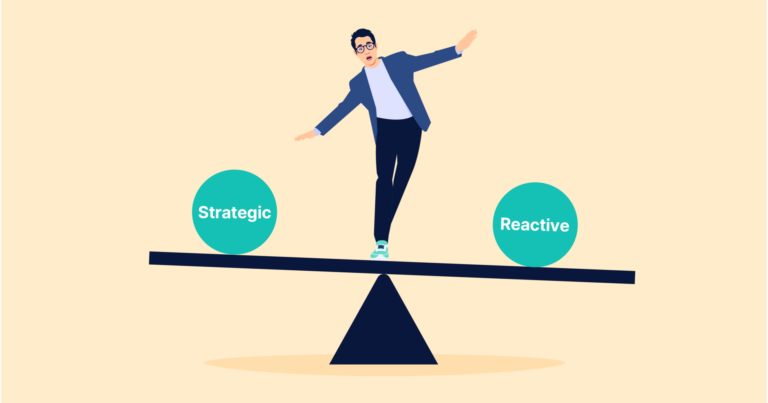

Traditionally, many in-house legal teams have struggled against the perception that their roles are limited to that of risk managers, reactive problem solvers, and even bottlenecks to business velocity. However, the narrative is changing – and fast. Sam Kidd, CEO of LawVu, spoke to InView about why technology isn’t just a tool in this transformation – it’s the catalyst.
Changing the way that in-house legal teams work is not a distant vision – it’s already happening. And the adoption of technology is a key driver in that transformation.
“Technology can enable in-house legal teams to scale their impact while maintaining their human touch, tackling the challenges of change along the way,” said Sam. “Technology enables you to step away from the repetitive and focus on the strategic. That’s where the real value is.”
The legal profession hasn’t always been the fastest to adopt new tools. Much of that comes down to mindset. Risk-averse by nature, lawyers are trained to look for what might go wrong. That’s not a flaw – it’s a feature. But it can make innovation feel more like disruption than opportunity.
Sam acknowledged this tension, saying, “Legal is an incredibly hard industry to shift. Change is terrifying because it upends the way you’ve been operating. But as the Greek philosopher Heraclitus said many centuries ago, the only constant in life is change.”
Still, Sam argued, although change is often scary, it is inevitable – and it’s already happening. Like it or not, technology has quietly become part of our everyday lives, from online banking and streaming content to AI-powered image searches. And, he said, legal teams are starting to catch up, especially as newer generations enter the workforce with a digital-first mindset.
He noted that this kind of digital fluency is a harbinger of the future legal workforce and stressed that the next generation isn’t ‘adopting’ technology – they’re growing up with it. And as they enter the workforce, they’ll expect legal processes to mirror the seamless digital experiences they know.
“That 15-year-old you see scrolling on their phone? In five years, they’ll be working beside you. For them, this is just the present – not the future.”
It’s impossible to talk about legal tech without addressing the elephant in the room: AI. From legal research to redlining and contract review, AI is everywhere. But Sam urged caution rather than cynicism. “We use AI every day at LawVu. Most of our code is co-authored with AI,” he said.
“But we haven’t reduced headcount – we’ve increased it. It’s not about replacing people. It’s about augmenting and enabling them to move faster and work smarter. You still need engineers to be able to verify the output, in the same way you need lawyers to verify AI legal output. And while I don’t think we’re heading toward a world without lawyers, I do believe we’re heading toward a world without lawyers who don’t use AI.”
One of the most practical uses of AI for in-house lawyers, Sam said, is within contract management workflows. Tools like BlackBoiler and ClauseBase, which integrate with LawVu’s platform, allow legal teams to automate the first pass of contract review, apply playbooks, and streamline redlining and drafting – all without ever leaving Word or Outlook.
“It’s like having a junior lawyer beside you. They take the first swing so you can focus on what matters.”
When it comes to contract review, Sam believes that AI can be transformative for in-house teams. “So much of your day is taken up with contracts, so it’s important to ask what elements of the process can be automated or enhanced with technology.”
Admitting that AI is still a work in progress, Sam said: “We’re all using similar foundational models, and accuracy will continue to improve. But right now, it’s about fitting these tools into your process, removing low-value work and giving time back to allow lawyers to focus on the right level of work, not replacing the process entirely.”
Sam pointed out that one of the biggest challenges facing in-house legal teams isn’t necessarily legal complexity – it’s communication. In his words, legal is often viewed as the “department of no”, brought in too late and under too much pressure. “When legal becomes the roadblock, it’s usually because the business had a bad experience. And a lot of that comes down to intake – how people engage with legal in the first place.”
That’s why LawVu’s business portal is such a game-changer. Sam outlined the way that it encourages collaboration between in-house teams and other departments by creating intake processes that streamline information sharing. These systems allow a business to self-serve on basic legal needs, such as accessing policy documents or completing simple forms before escalating requests to the legal team. This reduces friction while giving legal bandwidth to handle more complex tasks.
“With the business portal, we bring the knowledge legal has directly to the business – less back and forth, and more clarity.”
Sam said that, when it comes to technology for in-house legal departments, a positive mindset is essential. He encouraged legal teams to get comfortable being uncomfortable, and to slow down in order to speed up. He said the most powerful mindset shift in-house can make is to embrace the idea of self-disruption, something he admitted to practicing by asking himself the simple question, “how do I put myself out of business?”
The question, originally coined by American businessman and author Gary Vaynerchuk, encourages Sam to examine his company’s processes and its technology. “If I was to attack myself, what are the areas I’d focus on?”
Sam stressed that there is no place for complacency, and said disruption is something that should be welcomed rather than feared. “It sounds counterintuitive, but it’s the same thinking that saved companies like Netflix and Amazon, and doomed others like Kodak and Blackberry.”
For legal leaders trying to build a case for investing in technology, Sam made the following recommendations:
In-house legal teams stand at a pivotal juncture. The tools are here, and the urgency is clear. Sam’s message was that you don’t have to change everything overnight, but it’s imperative that you do have to start.
It’s a matter of accepting that AI, a technology that is now at everyone’s disposal, is driving change. The key, however, is to not get swept away by the hype, maintaining your focus on the outcomes will help people wade through the buzz.
“In time, AI will be the norm. Think of how quickly we adjusted to talking on the phone in our cars, speaking to Siri and Alexa. And the AI functionalities on our phones have expanded dramatically. These days, you don’t say you’re using AI to search photos on your phones, you just search – and it’s better. That’s what legal tech should feel like: simple, seamless, smart – and better. We’re not here to replace lawyers. We’re here to empower them.”
As he pointed out, the future of legal isn’t about replacing expertise – it’s about amplifying it. And in that future, technology isn’t the threat. It’s the unlock.


